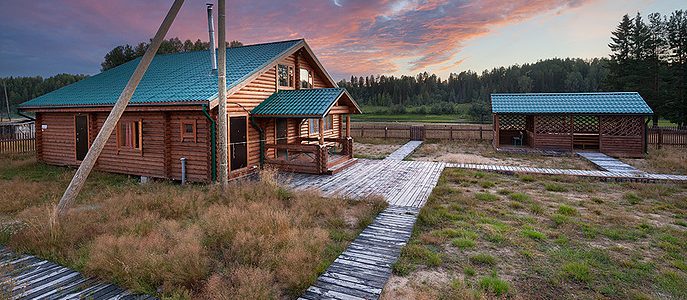1. Yakshinsky elk farm – the only place in the world where experiments are conducted on the domestication of moose. The herd of once almost completely destroyed animals is gradually growing – this is the result of hard work. This is the visiting card of the Pechoro-Ilychsky nature reserve!
2. The most famous mountain range in the Urals is the Ilych belt stone. The western branch of this mountain net is the Man-Pupu-Ner, Yany-Pupu-Ner, Bear Stone (Uygaless-Ner) ridges. In this part of the Ural Range it is possible to see stone remains. “Seven Bogatyrey” on the flat top of Man-Pupu-Ner (which means Mansi, Small Mountain of Idols) especially amaze tourists. Seven stone pillars lined up in a chain, and one, the largest, stands apart. The height of the pillars is from 22 to 50 meters. This miracle was created by nature in more than 200 million years and is one of the seven wonders of Russia.
3. Mosquitoes. Summer comes late to these places. In spring, returns of cold weather are frequent, that’s why there are still frosts and snowfalls on the plains in May and June. But in mid-June, bird cherry, mountain ash, wild rose, and wild rosemary, blueberries and lingonberries are already blooming. The local flowers and herbs are modest and discreet, but they don’t lose their charm. As soon as the snow is falling, the ground is warming up, the forest is dressing in fresh transparent green outfits, and the most terrible beast wakes up in the taiga – not a bear, but mosquitoes and the famous northern midge. In summer, the taiga is inaccessible to humans, the beast also leaves these places for airflow – on the open banks of the rivers or in the mountains.
4. The smell of taiga. From the high banks there is a beautiful view on the taiga. Gloomy spruce trees are sometimes sparsed with golden pine. Mushrooms are real solid, large and strong. Either the weasel flickers in the bushes with a red back, or the hares stand still nearby, with curiousity. All taiga is divided into spheres of influence. Ducks cuddle in the swamps. Sandpipers can be found throughout the summer period on any river of the reserve. In the forest you can meet blackbirds, finches and yurks appear. In the evenings you can hear the song of a zaryanka. Silver and gray gulls swirl over Pechora. Sometimes a golden eagle, listed in the Red Book, is seen flying to the north.
5. Hunting in the Komi Republic. The spring hunting season in Komi starts at the end of April or at the beginning of May. Hunting for geese, woodcocks, drakes is allowed. You can shoot wildfowl: capercaillie, black grouse, hazel grouse and partridge. Hunting for moose, bear, as well as throughout the Komi Republic, is allowed in the licensing mode; on a wolf – without licenses. Here, in fact, you can get a serious trophy – a bear, for example, or a large wolf that rises after the deer herds from the tundra along the river valley.
6. The source of Pechora is another attraction of the Pechora-Ilychsky reserve. It originates in the northern foothills of the Urals and carries its waters to the Barents Sea. The Pechora current is fast, the channel abounds with rapids and rifts. In its upper reaches, Pechora is still not very wide, but fast, but in the lower reaches the river breaks up into separate channels, forming numerous islands. Ecologists claim that the Pechora is the cleanest river in Europe. The Pechora is the second river in the European part of Russia after the Volga, and perhaps the first in terms of stocks of valuable commercial fish.
7. Fishing in the Komi Republic. Residents of the Pechora region have grown on eating fish since ancient times. In the Pechora waters grayling splashes freely, the whitefish basks in the reaches and deep holes, burbot is also found here. Large handsome ides will become easy prey for fishermen. You can also meet nelma, omul, vendace, peled. In recent years, a bester has appeared in the Pechora – a hybrid of beluga and sterlet, which has developed quite well within the limits of the Subpolar region. In addition, in the Pechora, pink salmon spawns more and more often. But the real king of the Pechora waters is salmon. It spawns at the end of summer, and in former times its fishing began after Ilya’s day. Now the herd of Pechora salmon is under the strictest guard, and it is rare for any of the local residents to get this royal fish. Fishing is licensed.


